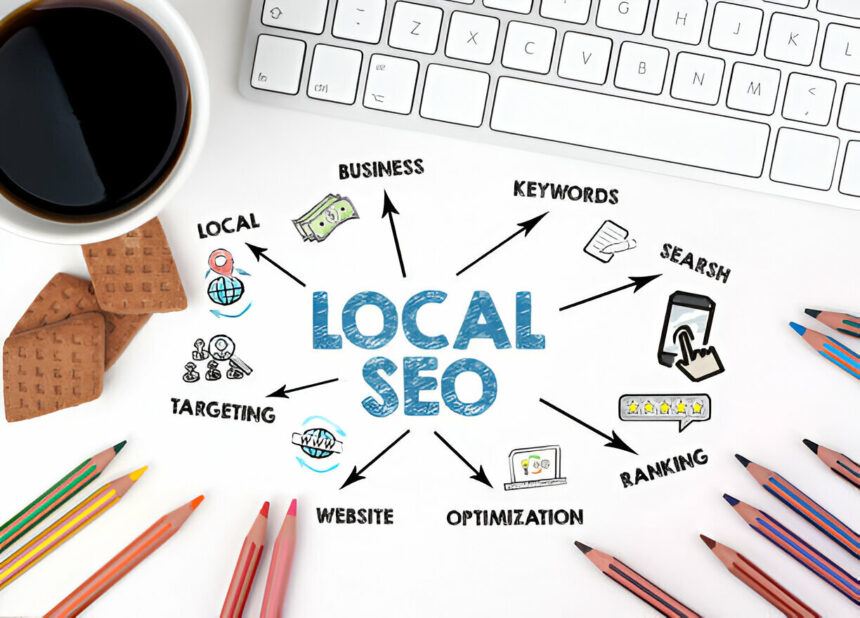Local SEO has become essential for businesses looking to attract customers in their area. Unlike traditional SEO, which focuses on ranking in broad search results, local SEO helps businesses appear in location-based searches. Understanding the differences between the two and knowing how to optimize for local search can make a significant impact on visibility, foot traffic, and overall success.
What Is Local SEO?
Local SEO is the process of optimizing a business’s online presence to rank in local search results. It helps businesses connect with customers searching for services in their area. This is especially important for businesses with physical locations or service areas.
When someone searches for a business type followed by a location or uses phrases like “near me,” Google prioritizes businesses that match the search query based on location, relevance, and prominence. This includes results in Google’s Local Pack, Google Maps, and localized organic search listings.
How Local SEO Differs from Traditional SEO
Traditional SEO aims to increase a website’s visibility on a national or global scale. It focuses on factors such as high-quality content, backlinks, and domain authority. The goal is to improve rankings for broader keywords that attract traffic regardless of location.
Local SEO, on the other hand, is designed to help businesses rank in location-specific searches. It prioritizes factors like Google Business Profile optimization, local citations, and customer reviews. While traditional SEO is important for reaching a wider audience, local SEO is essential for businesses that depend on attracting customers in a specific area.
Key Factors That Influence Local SEO Rankings
Google determines local rankings based on three main factors:
- Proximity – How close the business is to the searcher
- Relevance – How well the business matches the search query
- Prominence – How well-known and trusted the business is online
These factors determine whether a business appears in Google’s Local Pack or higher in search results when users look for services nearby.
How to Optimize for Local SEO
1. Claim and Optimize Your Google Business Profile
A Google Business Profile is one of the most important tools for local SEO. It helps businesses appear in local search results and Google Maps. To optimize your profile:
- Ensure the business name, address, and phone number are accurate and consistent
- Choose the correct business categories
- Upload high-quality images showcasing products, services, and location
- Respond to customer reviews and engage with users
- Post updates, promotions, or events to keep the profile active
2. Use Local Keywords in Website Content
Optimizing a website for local search means incorporating location-specific keywords in important areas like:
- Page titles and meta descriptions
- Headings and on-page content
- Image alt text and URLs
Instead of using broad terms, businesses should focus on keywords that reflect their service area, such as “plumber in Chicago” or “best coffee shop in Austin.”
3. Build Local Citations
Citations are online mentions of a business’s name, address, and phone number across directories, review sites, and social platforms. They help establish credibility and improve search rankings.
To optimize citations:
- Ensure consistency across all listings
- Submit business details to relevant directories such as Yelp, TripAdvisor, and local chambers of commerce
- Use citation management tools to monitor and update listings
4. Encourage and Manage Customer Reviews
Customer reviews play a major role in local search rankings. Google prioritizes businesses with more positive reviews, as they indicate trust and reliability.
To increase reviews:
- Ask satisfied customers to leave feedback on Google, Yelp, or Facebook
- Respond professionally to all reviews, both positive and negative
- Use review management tools to track and respond to customer feedback
5. Optimize for Mobile and Voice Search
Most local searches happen on mobile devices. A mobile-friendly website improves user experience and increases the chances of ranking in local search results.
To optimize for mobile and voice search:
- Ensure the website loads quickly and is easy to navigate
- Include clear contact information and call-to-action buttons
- Optimize content for conversational search queries used in voice search, such as “Where is the nearest pizza place?”
6. Use Local Schema Markup
Schema markup is a type of structured data that helps search engines understand a business’s location, services, and contact information. Adding local business schema to a website can improve visibility in search results and provide users with important details at a glance.
7. Get Listed in Local Business Directories
Submitting business details to reputable local directories enhances online visibility and builds credibility. Listings should include accurate business information, photos, and links to the website.
Popular local directories include:
- Google Business Profile
- Yelp
- Bing Places for Business
- Facebook Business
- Yellow Pages
A well-maintained business listing increases the chances of ranking higher in search results and reaching more local customers.










 /home/u448362301/domains/theexpotab.com/public_html/wp-content/themes/foxiz/templates/popup.php on line 167
/home/u448362301/domains/theexpotab.com/public_html/wp-content/themes/foxiz/templates/popup.php on line 167